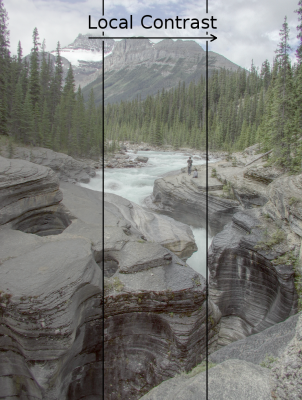informatik



The original HDR image courtesy of Greg Ward |
Since the human eye is the most sensitive for either spatial or temporal changes, we propose a framework for image operations on spatial contrast, rather than on an absolute pixel values. Such approach gives better control over the visibility of the changes introduced by image processing operations. The proposed framework is especially suitable for a detail-preserving compression of contrast in HDR images. Within the proposed framework images are processed in a visual response space, in which contrast values directly correlate with their visibility in an image. Our framework involves a transformation of an image from luminance space to a pyramid of low-pass contrast images and then to the visual response space. After modifying response values, the transformation can be reversed to produce the resulting image. To predict the visibility of suprathreshold contrast, we derive a transducer function for the full range of contrast levels that can be found in High Dynamic Range images. We show that a complex contrast compression operation, which preserves textures of small contrast, is reduced to a linear scaling in the proposed visual response space. See the gallery of images processed using our framework. See also the presentation, presented at APGV 2005. |
Both tone-mapping operators, contrast mapping and contrast equalization, are available as a part of the pfstmo package - pfstmo_mantiuk06. For the best results please use the CVS version or a 'tar' release NEWER than 1.1.